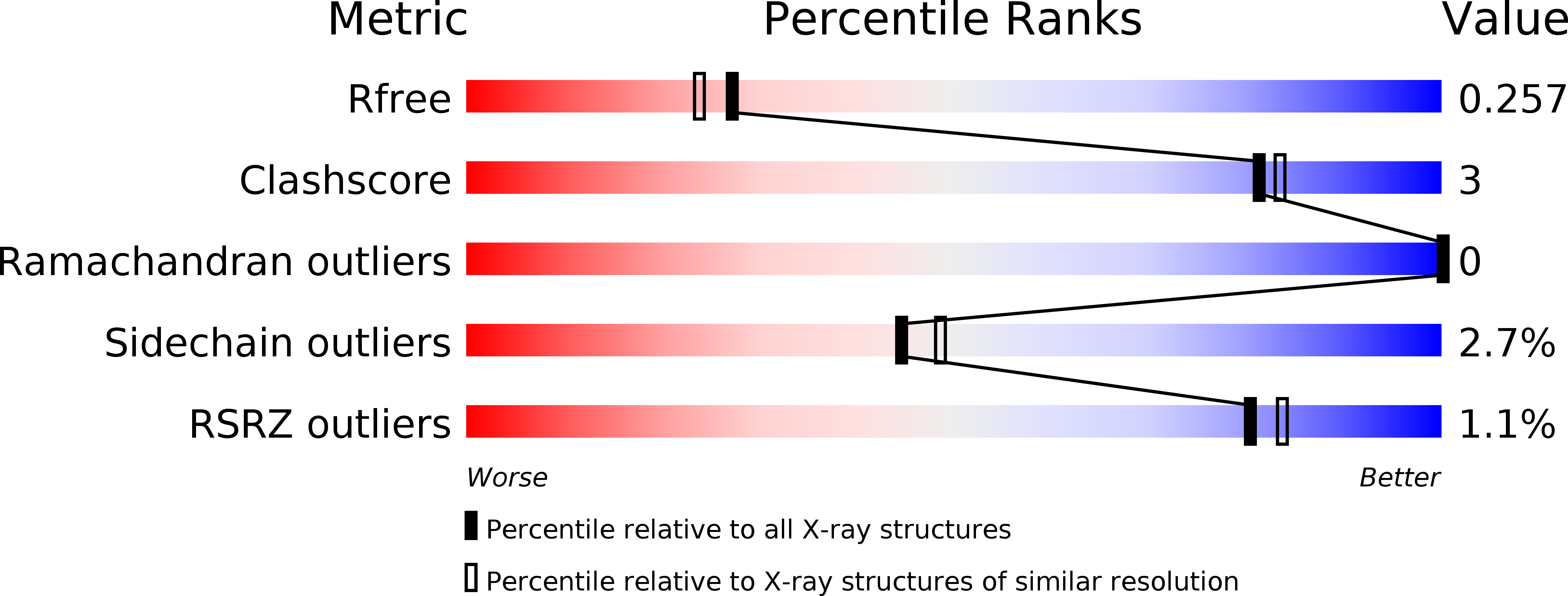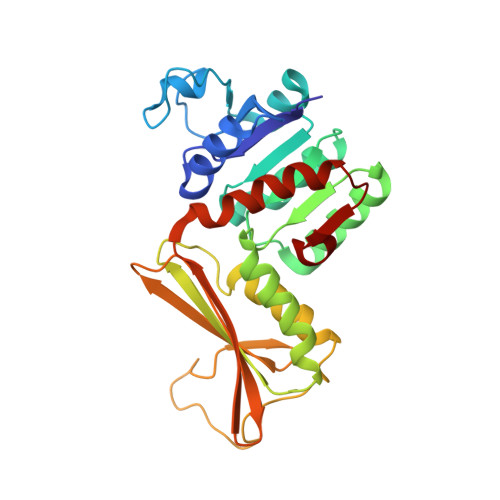Crystal structure of dihydrodipicolinate reductase (PaDHDPR) from Paenisporosarcina sp. TG-14: structural basis for NADPH preference as a cofactor
Lee, C.W., Park, S.H., Lee, S.G., Park, H.H., Kim, H.J., Park, H., Park, H., Lee, J.H.(2018) Sci Rep 8: 7936-7936
- PubMed: 29786696
- DOI: https://doi.org/10.1038/s41598-018-26291-x
- Primary Citation of Related Structures:
5Z2D, 5Z2E, 5Z2F - PubMed Abstract:
Dihydrodipicolinate reductase (DHDPR) is a key enzyme in the diaminopimelate- and lysine-synthesis pathways that reduces DHDP to tetrahydrodipicolinate. Although DHDPR uses both NADPH and NADH as a cofactor, the structural basis for cofactor specificity and preference remains unclear. Here, we report that Paenisporosarcina sp. TG-14 PaDHDPR has a strong preference for NADPH over NADH, as determined by isothermal titration calorimetry and enzymatic activity assays. We determined the crystal structures of PaDHDPR alone, with its competitive inhibitor (dipicolinate), and the ternary complex of the enzyme with dipicolinate and NADPH, with results showing that only the ternary complex had a fully closed conformation and suggesting that binding of both substrate and nucleotide cofactor is required for enzymatic activity. Moreover, NADPH binding induced local conformational changes in the N-terminal long loop (residues 34-59) of PaDHDPR, as the His35 and Lys36 residues in this loop interacted with the 2'-phosphate group of NADPH, possibly accounting for the strong preference of PaDHDPR for NADPH. Mutation of these residues revealed reduced NADPH binding and enzymatic activity, confirming their importance in NADPH binding. These findings provide insight into the mechanism of action and cofactor selectivity of this important bacterial enzyme.
Organizational Affiliation:
Unit of Polar Genomics, Korea Polar Research Institute, Incheon, 21990, Republic of Korea.
















